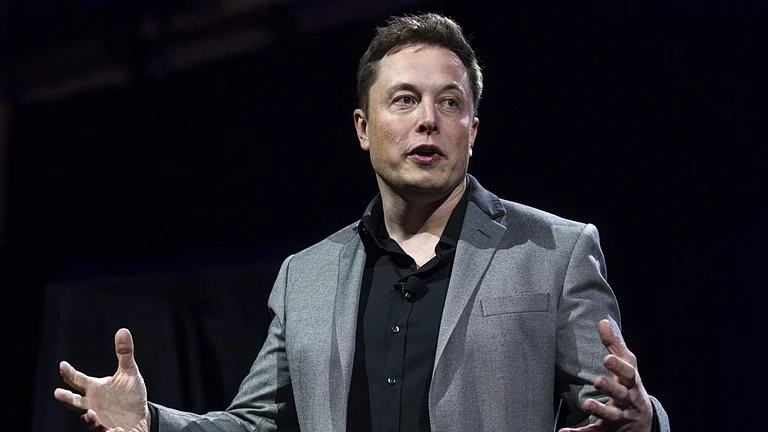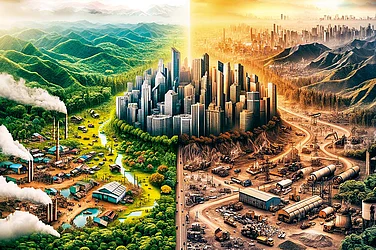In 2016, new parents Ghazal and Varun Alagh launched Asia’s first MadeSafe-certified baby care brand Mamaearth, now a leading personal care brand with 120 products and a business size of over Rs 5 billion per year. A recent fundraise saw the direct-to-consumer (D2C) company valued at about Rs 54 billion. This comes in an intensely competitive market where global giants such as L’Oréal, Unilever and P&G play.
Is Mamaearth an outlier? Or will it herald many more runaway D2C successes that India will see? To understand what the answers could be, we have to go back in time a little to see how the Indian economy has changed structurally and how these changes have come together to create a potent cocktail.
The Democratisation of Choice, Content and Commerce
How low can you go?
Even before the pandemic, India was home to the lowest mobile data rates in the world. COVID-19 saw these rock-bottom rates plunge by another 65% to about Rs 6 per GB. To put things into perspective, mobile data in the second-placed US costs around Rs 595 per GB.
How inexpensive can it get?
We are now one of the largest smartphone markets in the world with over 30 brands in play and entry models priced as low as Rs 4,000.
How many languages can you speak?
Translation tools, language keyboards, and voice search and chat have made the internet accessible to all—be it in urban India or rural Bharat. Data suggests that in the next decade itself, half of all Indians will access the net in regional languages.
How easily can you pay?
Even before demonetisation struck, the National Payments Corporation of India (NPCI) had introduced UPI, the mobile-based payment platform. No credit or debit cards, no risky storage of user information, no elaborate infrastructure—just simple, secure, seamless payments.
How far can you deliver?
Even as Flipkart and Amazon delivered to more and more locations with each passing year, the logistics and delivery ecosystem has evolved to keep pace with the growth in e-commerce. Today, you can have your package delivered to 28,000 PIN codes across India—widening the Total Addressable Market (TAM) well beyond metros and mini-metros.
How well can you connect?
India’s content creators are moving towards international celebrity interviews, Netflix Specials of their own, and, of course, funding. The creator economy itself is poised to grow 4x in the next three years.
Each of these areas is racing forward to make shopping more tempting and more frictionless. For instance, the ‘buy now, pay later’ (BNPL) services are set to reach almost 10% of the total e-commerce market in the next few years.
On the back of these tectonic shifts, many more great D2C brands that consumers love will be born, challenging the might of the large legacy brands. This army of ants has just started marching, and I believe that the D2C business in India is just entering the steep part of the J curve.
Three founders on why they picked D2C
“D2C and going digital have enabled us to reach our customers and know them to a degree that an ad campaign simply would not have allowed us to.”
—Shauravi Malik, Co-founder, Slurrp Farm
“D2C is a tool to get closer to the consumer—the ability to get quicker, completely direct consumer feedback. In terms of product development, talking to the consumer and building a brand with the consumer is super helpful. D2C, as a format, enables conversations to happen in a rich way.”
— Shrey Badhani, Co-founder, Kapiva
“A brand can communicate with its consumers through social handles but you need to develop a community if you want to be high on empathy.”
— Rachana Gupta, Co-founder, Gynoveda
The more things change, the more they stay the same
In the world of D2C, the focus on acquiring great consumer insights is still at the heart of keeping brands competitive. However, how you do that has changed. How you engage with your consumers has changed but not how sharply and competitively you communicate your solution for the consumers’ problem. D2C enables you to offer a much wider product choice but it doesn’t change the need to have great products and packaging that the consumers would love and want to buy again.
The mutable world of D2C
It is essential to remember that your brand needs to be available where your consumer is shopping for it. D2C or your digital channel is just one way for your consumer to buy your brand. Many digital-first brands are now omnichannel. for instance, Mamaearth is available on its own site, on large and small e-commerce marketplaces, at e-grocers and e-pharmacies, as well as offline. Licious is available on its own app but also on platforms such as Swiggy and Dunzo. While omnichannel presence brings with it other issues like inventory management and channel conflict, the primacy of consumer delight mandates that brands figure out how to manage these issues.
Equally, we’re seeing brands build and invest in their community rather than just grow their audience. This requires deeper engagement, one where brand owners collaborate with brand users—taking their suggestions, listening to their feedback, and building enduring relationships. We’ve seen brands like Gynoveda discuss women’s health and engage with the “sisterhood” in a private Facebook group. Cult.fit has successfully taken their in-gym chant of “We are Cult” online and on their app with their members working out online with celebrity trainers in group training sessions, receiving diet recommendations, sharing healthy recipes, and more.
In this internet era, the bar has been raised on honesty and transparency—What ingredients does your product use? Are any of them ‘nasties’? Does the organic food you sell have traceability? Is your brand just another business or does it stand for certain values that are of interest to the consumer? Diversity at work and so on.
In fact, transparency has taken on an even greater role since your customers today won’t write to a magazine or the consumer court with their product problems—They are more likely to tweet to you or post on your Facebook or Instagram! At Fireside, we strongly believe that the values and principles of environmental, social and corporate governance (ESG) are even more important to D2C brands than to the legacy ones.
Finally, the new generation of D2C brands has started going beyond product and consumer propositions and has defined and followed a larger social purpose. Vahdam India reinvests 1% of its profits from sales in their TEAch Me initiative which educates children of tea estate workers. Similarly, Slurrp Farm invests 1% of its profits to NGOs supporting children and children’s shelters. Mamaearth has planted over 1,10,000 trees which can be tracked by geo-location, as part of its purpose of ‘Goodness Inside’. NoNasties, too, plants trees best suited to their location. Design Café is now upskilling its staff through its Ujjivan initiative. The list goes on.
(VS Kannan Sitaram is a venture partner at Fireside Ventures)





















